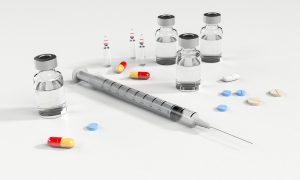You’re low on testosterone? Here’s your needle. High on estrogen? Here are your pills. Low on progesterone? We’ll pass the cream. While conventional medical doctors have your best interest in mind, this is often their starting point—and the end of a deeper investigation. Now, you’re stuck taking hormones for who knows how long, without discovering if you actually do have the ability to produce your own.

It’s important to find the cause before treating your symptoms (Photo: Photo by Jonathan Simcoe via Unsplash)
Why isn’t your body producing hormones? Why is it producing too many? Is there a systematic issue that’s tripping it up and getting you down? These are the questions to ask from the start. The same questions help determine whether you do, in fact, have a hormone disorder—and they might enable you to dispense with the medication. Wouldn’t that be nice?
So, You Have a Hormone Disorder… Now What?
As we discussed in our previous blog post, many patients think they have a hormone issue before they even visit a doctor. From a symptom standpoint, multiple health conditions can manifest as a hormonal imbalance, so it’s important to confirm this first. Once diagnosed through a series of saliva tests, the real magic happens.
Step 1. Find the Cause of the Hormone Disorder
Whether it’s your adrenal glands, metabolic damage, nutritional deficiencies, biochemical stress, PCOS, or intestinal inflammation from food allergies or yeast overgrowth, something is holding back your hormone potential. Once you get to the root of the issue through additional testing, it’s easier to address it.
Step 2. Don’t Be So Quick to Medicate
If you’re like Suzanne Somers, you’re into a quick fix. She even has her own brand of bio-identical hormone products—medication and supplements that are chemically identical to what our bodies are capable of producing. But easy isn’t necessarily best when it comes to your health. Who wants to live a life popping pills or coating themselves with creams, when you can uncover the cause and take care of your health concerns for good?
Even worse, many of these “solutions” have potential ramifications. As late-night infomercials show the night owls, there are a number of class-action lawsuits related to testosterone replacement and the risk of heart attacks, strokes, and blood clots. That’s a risk we hope you’re not eager to take.
Step 3. Treat the Cause
Once you’ve identified the cause of your hormone imbalance, it’s time to eliminate it—naturally. The most common cause/treatment plans include:
- Metabolic Damage – Get a hold of your weight and nutrition with a personalized plan.
- Chemical Stress – Actively minimize exposure (i.e., stop heating your food in plastic and drinking out of plastic water bottles left in a hot car).
- Nutritional Deficiency – Identify the minerals and vitamins you’re lacking, and infuse them into your diet.
- PCOS – Stabilize ovarian function and limit impact.
- Liver Function – Detox and sweep out toxins for enhanced liver function.
Step 4. Turn to Conventional Medicine if Needed
At Twin Cities Metabolism, we have a resounding success rate with our natural, seek-treat-and-delete hormone solutions. If we’ve identified your health concern and taken all the right steps to correct it, without improvement, you may choose to be referred to a conventional medical practitioner. Whether you need an oral contraceptive to better treat your PCOS or require a more invasive, surgical procedure, you’ll have some peace of mind knowing you took all the right steps beforehand.

One Comment